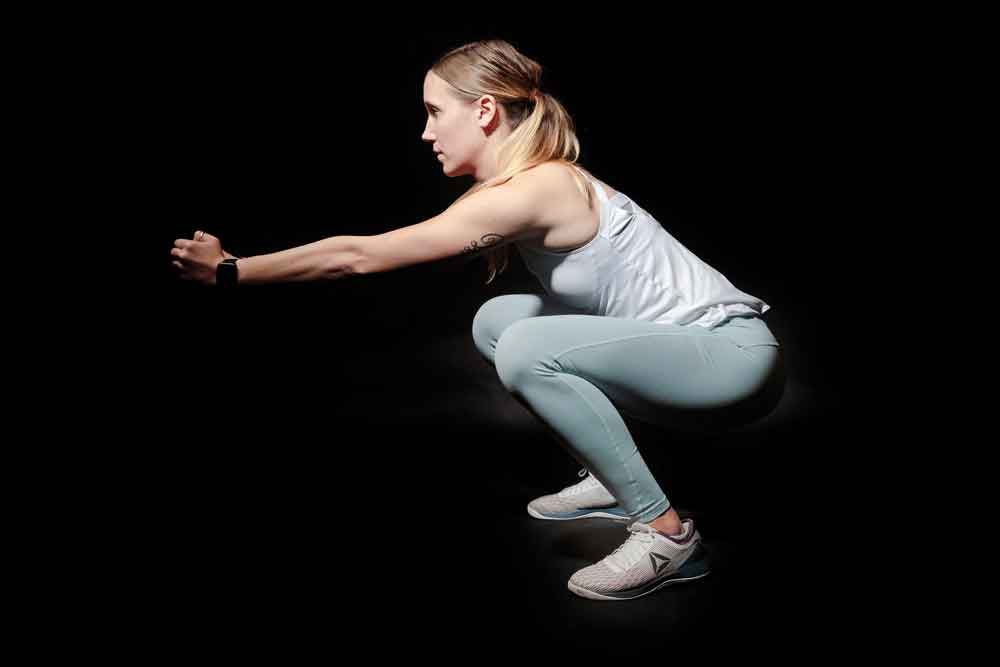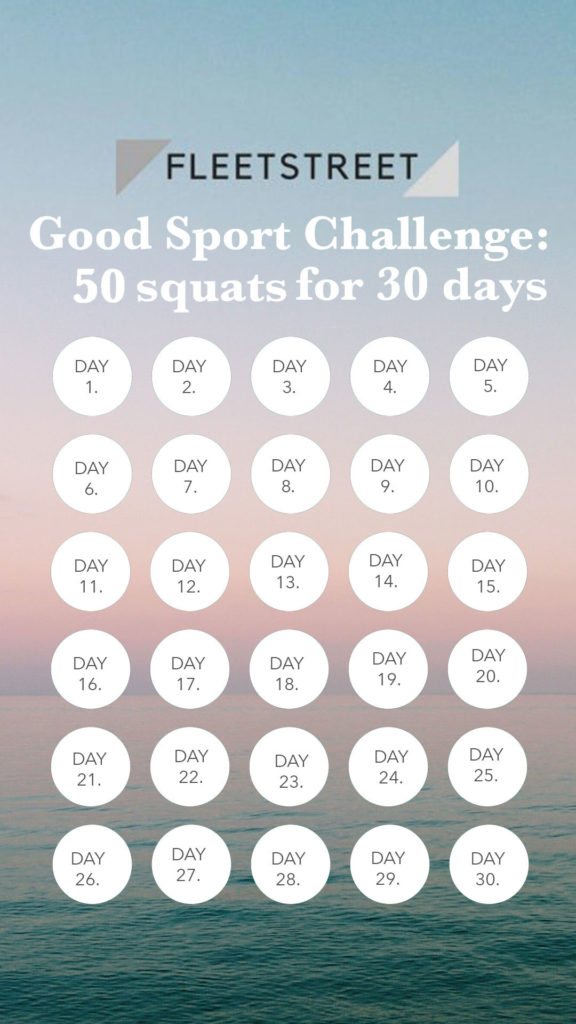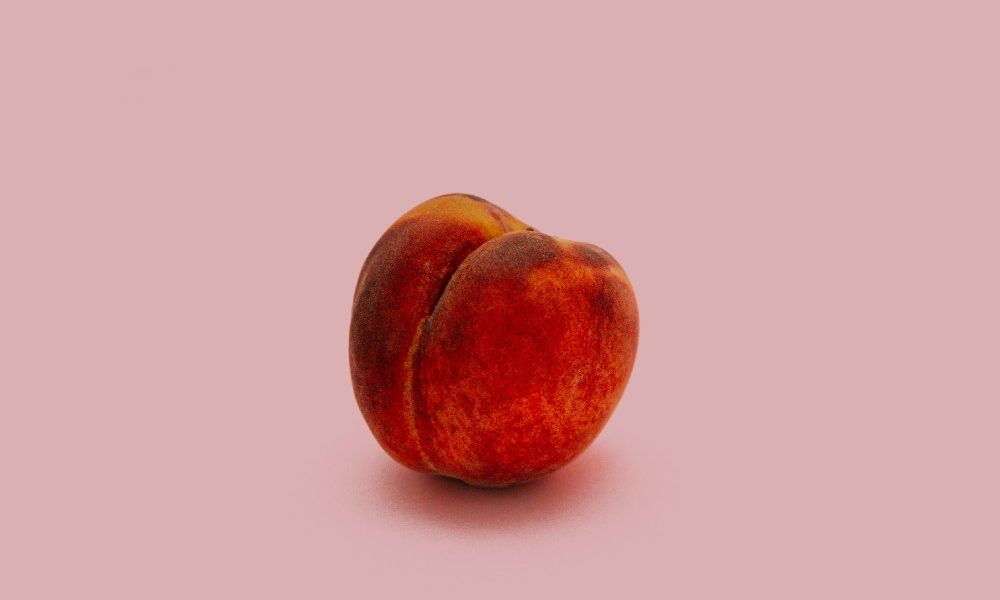This squat challenge review is part of our Good Sport series. We’re up for any challenge (physical or mental) and this is where we prove it – and then convince you to do the same! Daily crunches anyone?
Pre-Covid, despite my desk-bound job, I was always moving: Attending events, exploring the local coffee shops, travelling, or walking my dog. I also trained for half marathons (cancelled) and attended any cool workout studio that crossed my path (closed). Rarely was there a day, I didn’t go out – but now hermit life now seems to be the baseline. As we enter into what feels like our eighth year of lockdown, I sink deeper into what I can only categorize as “a sedentary lifestyle.”
It looks like I’m not alone: Even pre-pandemic, The World Health Organization was reporting that at least 60 per cent of the global population is failing to achieve the minimum recommended 30 minutes of daily activity. (!) We can imagine that those numbers are only getting higher as “Netflix n Chill” becomes the new Friday night out.
To correct this, and to try to keep my mental health in check, I’ve tried to get my steps in, but that can only go so far in the midst of a Canadian winter. And in my tiny apartment, hard core workouts have lost their appeal. So, when Lisa told me about her burpee challenge, and asked if I wanted to try one, I immediately vetoed the idea of push-ups (*shudder*) in favour of my workout move: Squats.
When I started looking into the benefits of squats, I realized they don’t just build your glutes, they could help build your brain (seriously). Basically, exercise increases blood flow to the brain, which is a good antidote for neurodegeneration (translation: keeping you sharp). Any exercise has benefits, but squats, in particular, are super effective. Why? The up and down motion of a basic squat works against and with gravity, and the effect that has on our blood flow is extra beneficial for our brain function, like cognition, memory and learning (in layman’s terms). Would this counteract all that Love Island I’ve been watching? I hoped so.
I decided to try it and find out if 50 squats a day would build strength, give me any visible results, or a cognitive booster shot. But first (ha), I got some answers about how to do it properly.
The first to know: Will 50 squats a day for a month *actually* do anything?
First, I have to note: I also walk eight to 10 kilometres on most days. So my legs are getting a workout. But squats are a good starting point to begin challenging the lower body. But will I see any physical changes?
“In terms of seeing visible results, you really need to factor in eating habits,” says Andrea Tam, owner and trainer at Tamfit Canada. “If you are eating healthy, exercising daily, then you should see some positive results in the glutes within 30 days. But if you are exercising, have added 50 squats a day but continue to unhealthy foods, then that will definitely hinder your results.” Note to self: Ditch the Doritos.
First thing’s first: how to do a squat properly.

I checked with the expert before I dropped it low. “There are definitely rules to follow for injury prevention,” says Tam. She provided a few hard (I’ll say) and fast rules for set up:
- Feet should be wider than shoulder-width apart and angled out slightly so you can really dig into those heels when you come down for the squat.
- Knees and hips should be slightly flexed and the spine and neck held in neutral position.
From there, Tam explains there are two phases: Eccentric Phase (the way down) and Concentric Phase (the way up).
- On the way down, you’ll want to move your hips backward, allow your knees to bend naturally and your body weight should be on the heels of the feet – you should be able to wiggle your toes. Then, lower your body until your upper legs are parallel to the ground (or as far down as you can go) but remember to keep your bum back, knees over ankles but not over toes. Keep your eyes forward the entire time, not looking down.
- On the way up: As you return to the standing position, make sure you are pushing down the heels, maintaining upright posture and keeping your eyes forward. Don’t look down.
The eternal question: What do I do with my arms? Sometimes I honestly felt like I was at a middle school dance, I didn’t know what I should do with my hands. Tam says this would depend on the type of squats you are doing. “If we are doing just a classic body weight squat, I recommend holding the hands in front in prayer position or arms straight out in front of you,” says Tam. “Some people may feel comfortable with the hands on hips as well.”
What is the more “important” part of the squat?
What should I be more concerned about: The up motion or the down motion? Or is it the hold? Short answer: Both.
Tam says: “The eccentric phase of a squat, the muscle is generating tension but as it exerts force, it lengthens. Think of a braking mechanism. In the concentric phase, the movement happens when the muscle contracts with enough force to shorten. In the isometric contraction phase – a.k.a. the hold – the muscle is engaged without actual movement and no change in muscle length occurs.” She adds that in her fitness classes, she always does a combo of the above, as she finds it works well for building strength in the lower body: “We will perform a squat with a three count eccentric motion and one-count concentric motion for 12 reps. Then we add the isometric hold at the end.”
What muscles (or muscle groups) do squats work?
Many muscles, which is probably why these trainers love squats so damn much. Squats work the hip extensors (gluteus maximus, hamstrings), hip adductors (inner thighs), gastrocnemius (calf), quadriceps and erector spinae (lower back), says Tam.

On squat #49, my form isn’t perfect.
What if I do my squats improperly? Am I risking injury?
“Improper squats can definitely lead to lower-back and knee injuries,” says Tam. “Some may even experience hip pain. Form is so important with every exercise. I stress that in all of my teachings, form over everything.”
I noticed I tend to find myself leaning forward in a squat. How should I be holding my back during a squat?
“This is definitely common,” says Tam. “I always start by telling my members, set your feet position first (wider than shoulder width apart and angled out slightly), then I have them bring the shoulders up, back and down so they have good posture to begin. By pushing your hips back and allowing the knees to bend naturally (think sitting back into a chair), your trunk will lean forward slightly BUT you should not be leaning forward completely.” She stresses that you need to maintain proper posture throughout the entire movement, never round the back. “The back should always be as straight as possible and not straight as in upright but where the natural curvature of the spine can be maintained throughout the entire squat.”
Tam says it depends on your #goals, but generally speaking, you want to lower your body until the upper legs are parallel to the ground or go as far down as you can comfortably go – with a focus on proper form for injury prevention. “There are definitely some trainers who believe the lower, the better,” says Tam. “But in the long term, it’s more important to do what works for you, the individual performing the exercises and what makes you comfortable.”
What are some ways to make squats even more effective?
The first few days I was sore. But then, I plateaued.
“Adding weights, different variations, bands, plyometrics will definitely make squats more effective,” says Tam. She explains that after a while classic squats will get boring, so change it up especially if you want to see results and strengthen your muscles. Tam says there are a few ways to challenge your body more and make squats work harder for you, like:
Adding resistance: Weights, like a barbell, dumbbells, kettlebell or resistance bands. (Tam loves bands for squats).
Add in plyometrics: Squat jumps (forward and back or up and down or side to side), squat tuck jumps, frog jumps, snatch and grabs, and squat to 180-degree jumps.
Squat on one leg: Pistol squats, Bulgarian split squats, even adding combinations such as pulses, holds, monster squats (moving the feet forward and back with feet wide).
Call me an overachiever but I add pulses at the end of my squat sessions. “Squat pulses are definitely another good variation to add to the squat exercises because they allow for constant tension on the muscles and constant engagement of the muscles,” says Tam. “The pulses will fatigue the muscles in a different way than doing the full range of motion. Having said this, pulses combined with an isometric hold and different combinations of eccentric and concentric movements will definitely strengthen the glutes, core and lower body.”
What are the best types of squats to do for a 30 day squat challenge?
I alternate between classic squats and sumo squats. What’s the difference between the two? What other types are good?
Classic Squats: “This type of squat works mainly the quadriceps, the glutes, spinal extensors, hip adductors, abdominals and hamstrings,” says Tam.
Sumo Squats: “Performed in the same way as the classic squat, but the legs are spread wider apart and the toes are pointed outward, which works the interior of the thighs intensely. The muscles engaged are the quadriceps, the adductor group, glutes, hamstrings, calves, erector spinae and abdominals,” says Tam. “The main difference between the two types of squats is that the sumo squats really work the inner thigh muscles.”
Mix it up. “I always change up the variations, the combinations and type of squats,” says Tam. “There are so many squats and all of them have positive benefits and increase the strength in the lower body muscles.”
What are the best squats to tone inner thighs?
“Sumo Squats are great for targeting inner thighs and you can perform several different combinations from single reps to pulses to then finish off with a hold,” says Tam.
What about the back of my thighs? She recommends Stiff-Legged Deadlifts which work your hamstrings and spinal extensors, or The Bulgarian Split Squat (or split squats) also work the hamstrings, glutes, and thighs.
I’m used to doing squats in the middle of sweaty boot camps or boxing classes. Tam says that whether the heart rate is up or down is not a factor. If you really want that extra push, doing certain squat variations will get your heart rate up, especially explosive squat exercises (i.e. squat jumps). “Maximum results will come from you putting in the work consistently and varying your workout routine,” says Tam.
Is it better to pump out 50 squats quickly or go slower?
TBH I just want them over with.
“Always choose form over speed is my philosophy,” says Tam. “Once you get the form down, you can do both. 25 normal paced squats to 25 fast squats.”
I found it hard to remember to do the 50 squats.
This sounds weird, but this is what worked for me: I’d quickly pump out 25, 30 second breather and then another 25 squats before I had my daily shower (yes, you read that right, I shower daily during lockdown). I found it easy to pair these two tasks so that I wouldn’t forget. But, I didn’t mind getting a little sweaty since those clothes would be coming off in a second anyway.
Besides my own vanity, what are the benefits of having strong glute muscles?
Turns out, better posture (also good for my vanity). “More so now than ever many people are working from home and sitting all day long and this can result in imbalances in the muscles connecting the lumbar spine, pelvis and femur,” says Tam. To rebuild strength and endurance in these affected muscles she recommends including not just squats, but deadlifts and lunges into your workout regime.
Having strong glutes is also essential for – get this – injury prevention. “The glutes are one of the largest muscle groups in the body,” says Tam. “Strong glutes will help support the lower back, knees hamstrings and core.”
Plus, strong glutes help you perform better, enabling you to complete other exercises much more efficiently such as being able to perform plyometric movements, jumps, running and improving agility and speed.
OK, did I notice huge results?
Mentally, that’s hard to measure. Of course, when I pulled myself away from the couch to start moving, I felt more alert than I did previously. Physically, a bit. I’m sure if I followed Tam’s diet advice, I would have noticed bigger gains, but I did notice slightly more toned thighs, especially the sides, and a more prominent “butt smile” (a term I learned during this process). But more than that, I actually found myself looking forward to the little endorphin rush after doing these squats every day. Frankly, it made me want to exercise more, which I feel like is kind of the point of challenges like these.
As Tam puts it: “The best part is, you can do squats anywhere, anytime, all you need is your body,” says Tam. “So get moving.” #NoExcuses

